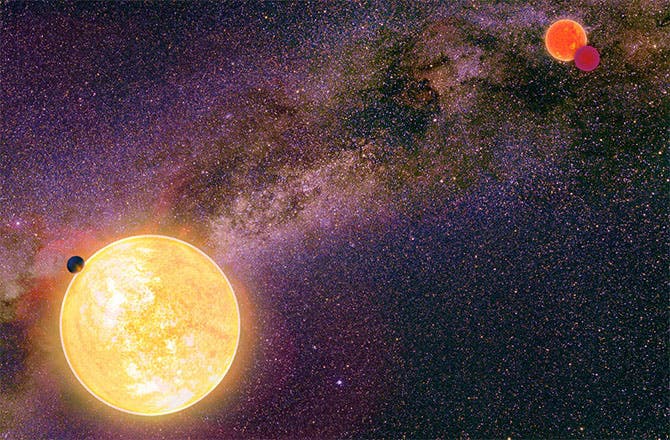Binary star systems, such as the one epically created by George Lucas when he made Star Wars’ Tatooine skyline, are pretty rare. A three star system is even harder to spot. Nearly 700 light years away, you can find such a rare sight. Here a gas giant called KELT-4Ab revolves in a stable 3-day orbit around its parent star, flanked by another two.

Jason Eastman of the Harvard-Smithsonian Center for Astrophysics is one of the lead authors of the new paper that describes this amazing three star planet. The discovery was made using the Kilodegree Extremely Little Telescope (KELT), which is comprised of two telescopes: one in Hawaii, the other in South Africa. One of the stars in the system, called KELT-4A , is the most massive and brightest, while the other two — called KELT-4B and KELT-4C — form a binary pair. The two stars orbit one another every 30 years.
It would truly be an amazing sight to experience the view from a three star planet. Alas, KELT-4Ab is a gas giant, so you wouldn’t have any proper footing, nor visibility. Being so close to its parent star, it would also be inhospitably hot. Astronomers actually class it as a “hot Jupiter” exoplanet.
For the sake of fantasy though, were this planet to be more Earth-like in viewing conditions you’d see the parent star at about 40 times the apparent size of the sun from Earth. Somewhere in the skyline, you’d also see two lights about two degrees spaced apart, each as bright as the full moon.
KELT-4Ab is only the fourth planet discovered in stable orbit within a multi-star system. As such, it will provide a great experiment for astronomers to study how planets can form in such systems.
“Because it’s so close,” says Eastman for Gizmodo, “we can visually study the orbits of all three stars and learn more about this poorly understood process to understand what role it may play in the formation and evolution of planets.”






